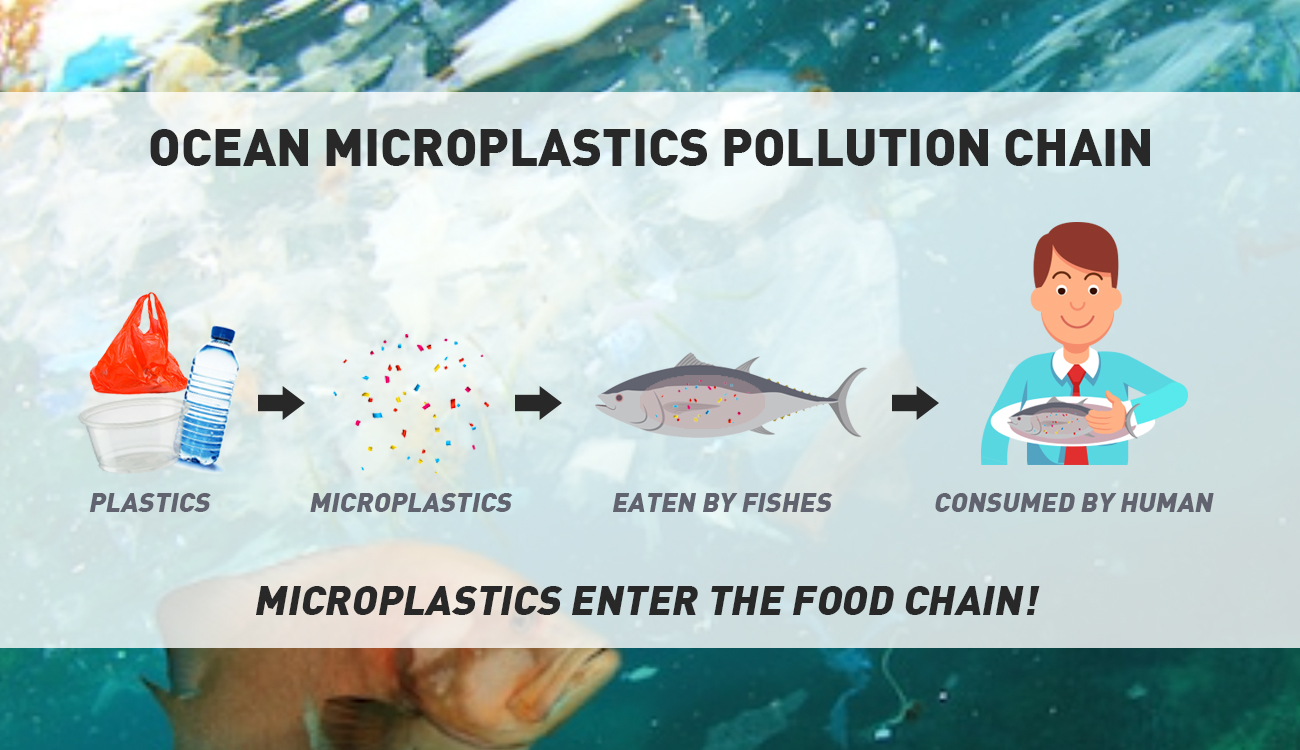
What are Microplastics?
Microplastics are plastic particles that have a size of less than 5 mm.
Where do Microplastics come from?
Microplastics come from variety sources. People use plastics every hours of every day. We drink out of a plastic water bottle, eat foods in a plastic container, even personal care, cosmetics, clothes and everything that listed “polyethylene” or “polypropylene”, in the ingredients list are plastics. Plastics do not degrade into smaller molecule or absorbed into the environment, instead it breaks down into smaller and smaller size and these particles (with diameter <5 mm) are called microplastics.
Why should we care about Microplastics?
Because it concerns humans’ health and environment. Poor waste disposal leads to scattered plastics in the seas. In 2010, between 4.8 million and 12.7 million tons of plastic was washed into the ocean and has it showed up in the stomaches of marine organisms that later the fishes are consumed by human. Medical University of Vienna did a research about microplastic traces from human bodies and found that all eight stools from eight individuals in eight different countries contained polypropylene and polyethylene-terephtalate particles, which are major components of plastic bottle caps and plastic bottles*. As if all this was not enough, recently scientist discovered nanoplastics (plastic particle with diameter <5µm) that even more dangerous than microplastics, as they can enter the blood system and accumulate in human tissues.
How should we act toward this issue?
We can start from ourselves by properly reduce, reuse, recycle all types of plastics, choose glass or metal drink containers, avoid buying things with excess plastic packaging and many other things to reduce the accumulation of plastic waste.
What is Java Biocolloid’s role in this issue?
The main concern of Java Biocolloid is consumers’ health and protection. Java Biocolloid has devised a method of analysis that allows us to evaluate the presence of microplastics in our products down to the size of 50µm. Our R&D team is currently developing a method of mass spectroscopy able to evaluate the presence of plastics of even smaller size. Our goal is to completely eliminate the presence of pollutants and thanks to the work of our R&D team, this objective is very much in sight.
Refference
*Neimark, J. 2018. Microplastics Are Turning Up Everywhere, Even In Human Excrement. https://www.npr.org/sections/thesalt/2018/10/22/659568662/microplastics-are-turning-up-everywhere-even-in-human-excrement











